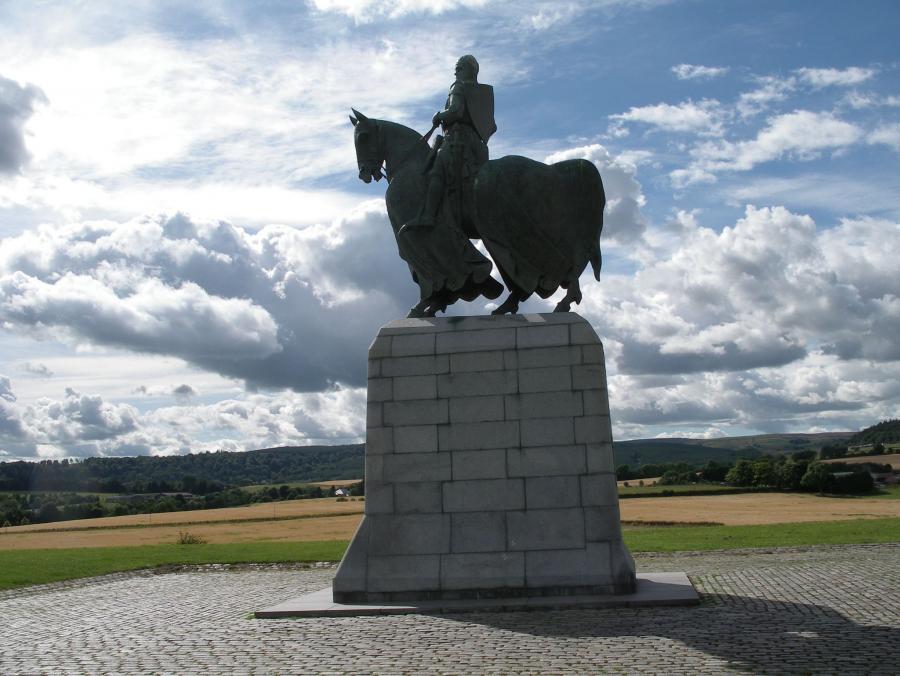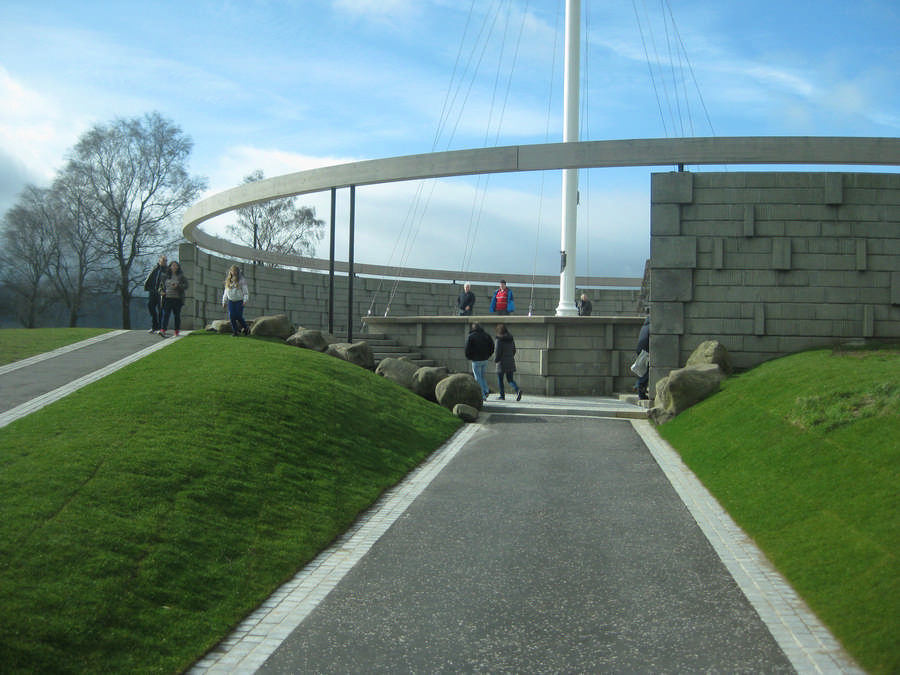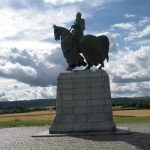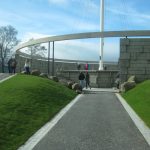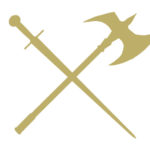Battle of Bannockburn 1314
[dropcap]T[/dropcap]he Battle of Bannockburn, south of Stirling, was a significant Scottish victory in the First War of Scottish Independence.
The Wars of Scottish Independence were between England and Scotland and began in 1296. The English forces under the command of Edward I had been victorious at the Battle of Dunbar in 1296 and at the Capture of Berwick in 1296. The Scottish King John Balliol had also been removed from the Scottish throne. The Scots however, had defeated the English at the Battle of Stirling Bridge in 1297, following which, Edward I had defeated the Scots at the Battle of Falkirk in 1298. Scotland was finally conquered in 1304, however in 1306 Robert the Bruce claimed the Scottish throne and the war began again.
In 1314 Stirling Castle was occupied by the English forces and the Scottish army led by Edward Bruce, Robert the Bruce’s brother, had it under siege. The castle was a key strategic point within Scotland as it controlled the route north into the Highlands. The English, now led by Edward II, had managed to assemble a formidable force to the south in the hope of relieving their forces within the castle.
Being aware of this, the Scottish forces headed south to meet the ongoing English forces. The exact site of the battle is still open to debate. There is a visitors’ centre at the site, historically believed to have been where the battle took place, however historians now believe the battle actually took place at possibly one of two locations approximately a mile to the east and north east.
As the Scots, now led by Robert the Bruce, and the English forces met, the Scots found themselves outnumbered by between two and three to one. The English forces also comprised of a large number of cavalry and longbow men.
The Battle
The Battle of Bannockburn was different from most battles at the time, which normally last only a few hours, in that it lasted two days.
On the first day some accounts state that a contingent of the Scottish forces led by Robert the Bruce, met forces commanded by the Earl of Gloucester and the Earl of Hereford. During the battle, Henry de Bohun, nephew of the Earl of Hereford, encountered Bruce on the battlefield at which point Bruce split his head open with an axe. This success rallied the Scots forces and they were able to gain an early success.
The English forces spent the night on the plain next to Bannock Burn (‘burn’ is Scots for ‘stream’). During the night a Scottish Knight, Alexander Seton, who had been fighting for the English forces, deserted and informed Bruce that moral was very low in the English camp and encouraged him to advance on their enemy.
The following morning Bruce advanced his forces towards the English. Edward was surprised to see the Scots advancing towards them. The Scots are said to have knelt down as they merged onto the battlefield in prayer. Edward is reported to have said “They pray for mercy!” to which one of his advisors replied “But from God, not you. These men will conquer or die.”
Edward then ordered that the English would charge against the Scots advance, however an argument broke out amongst the English as to who was to lead the charge. This resulted in the Earl of Gloucester leading the charge, but receiving little support, allowing the Scots to defeat this charge and gain ground on the English.
The English bowmen tried to halt the Scots advance, but had to be ordered to stop firing as they were causing casualties on both sides. The bowmen then tried to position themselves so they could shoot at the Scots from the flank, however the Scots light cavalry quickly closed in on them.
It became apparent that the English were going to lose and Edward along with 500 of his knights retreated from the battlefield and thereafter to a ship which took him to Berwick.
The remaining English army were routed and fled south towards the English border, pursued by the Scots forces. Of these English forces, only a small contingent survived the journey south avoiding the Scots forces and attacks from locals.
This defeat lead to Scottish forces conducting raids on northern England and the invasion of Ireland. This strengthened position forced the English Crown to agree to the Treaty of Edinburgh-Northampton. This was signed by Robert the Bruce and agreed by the English parliament. It acknowledged Bruce as the rightful ruler of the independent Kingdom of Scotland.
